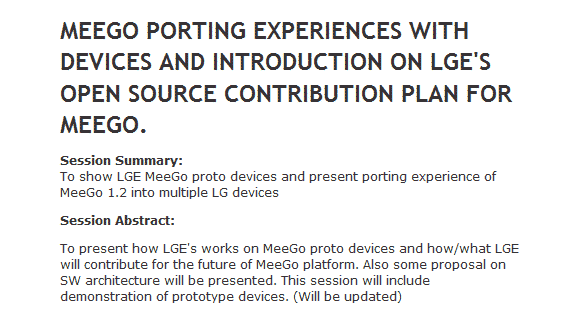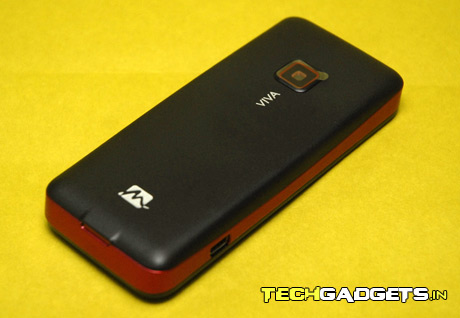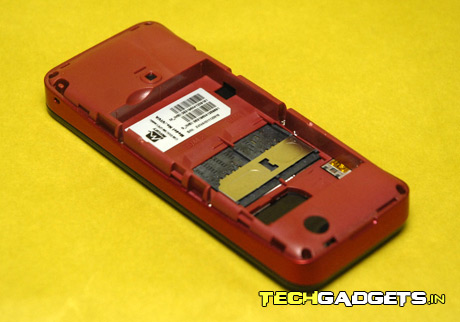Design
There's no arguing that Sprint has a soft spot for Sanyo / Kyocera. In the carrier's eyes, Sanyo-built phones have shown to be both durable and reliable in the utterly unpredictable hands of end-users, and fewer RMAs mean fewer FOFs in Overland Park. During a sit-down with the operator, we were told that the Echo is a project that has been in motion for over a year now, and that oodles of pivoting mechanisms were tested before the (now patent-pending) tilting / locking hinge was settled upon. Naturally, we spent a lot of time opening and closing this thing just to get a feel for its sturdiness, and while a week in the city is hardly a year in the R&D lab, we're just as confident in its ability to open / close now as the day we first touched it.

It's also impossible to ignore the Echo's girth. Without qualification, this is one of the thicker modern-day smartphones on the market, but it's easy to excuse when you realize that you're effectively getting two phones in one. From a display standpoint, anyway. We said it back in February, and we'll say it again -- the Echo's no looker, but what it lacks in aesthetics it more than makes up for in raw utility. If you're looking for a phone that oozes style, there's hardly a need to give this guy even a second of consideration, but if you're willing to overlook a somewhat unsightly exterior for one of the most unique phone experiences on the market, we think you'll find a lot to like underneath.
While feeling solid (as a rock, even), the Echo wasn't burdensome from a weight standpoint. In fact, we found that it slipped into our pockets even easier than most other phones due to how skinny it was from a width perspective. The volume rocker and microSD card slots were both positioned perfectly, and thoughtful packers will be elated to know that no proprietary charging cable is needed -- micro-USB does the trick. The pair of panels are decidedly glossy, but equally crisp and bright in use. We didn't manage a single scuff or scratch during our testing, despite a barrage of unadvised attempts.
The hinge
Oh, sure -- technically the patent-pending hinge is a part of the design, but given that it's what makes this phone, we couldn't resist the urge to break it out. For starters, you're probably wondering how exactly it works. That's best shown in the video just below, but the gist of it is this: A simple thumb push from left to right (one-handed) is enough to slide the top panel back, and a continued thrust will flatten 'em out beside one another. From there, a simple shove closes the gap in the middle, locking it into "tablet mode." If you'd rather mimic a laptop, you can raise the top panel up a notch, though we didn't find much use for this situation.
The hinge itself is a rather simple affair, only having a lock / unlock setting, a lie-flat setting, and a single tilt setting (for use in the aforementioned laptop mode). Once locked into place, the phone practically demands both hands to use, but at least multitouch is in full effect and works shockingly well with one finger on one screen and one on the other. It's quick to open, easy to adjust, and difficult to knock out of place without obvious intent. There's also a healthy and unmistakable "click" with each and every movement, ushering in a level of confidence with each movement. It became abundantly clear to us that Kyocera put an awful lot of work into the hinge; it's one of the more solid pieces we've seen in recent memory, and there's precisely no wobble to be found anywhere. Frankly, only a robust and rigid hinge would lead to an experience worthy of laud, and that's exactly what we found after a week of abusing it.
Software
As with any other smartphone, it's truly the software that makes or shatters the experience. Nothing could be closer to the truth with the Echo. Kyocera had no choice but to equip the Echo with Froyo (Android 2.2), given that it took months upon months to figure out a satisfactory solution to using the OS on a pair of panels. The upside here is that it's 2.2, rather than 2.1. While Gingerbread would've certainly been nice, the heavy-hitters of 2.x are all included with Froyo: Flash support, Mobile Hotspot / tethering, Move to SD and a vastly improved V8 browser engine. We were told that updates are definitely in the pipeline for the Echo, but got the impression that the v2.3 update would happen closer to the fall than the summer -- it takes awhile to retool a significantly tweaked version of Android, you know.
The good news here is that, for all intents and purposes, the Froyo build loaded on here looks and acts like a vanilla (read: untainted) copy of Android 2.2. There's no question that Kyocera has cooked up something fancy to make two panels work in conjunction, and the Tablet Mode Extension app is largely to thank, but outside of seeing Android work across two screens, you aren't apt to notice any irregularities. And that, friends, is impressive. There's a 1GHz Qualcomm QSD 8650 Snapdragon CPU planted inside, right alongside 1GB ROM and 512MB of RAM. As far as flagship phones go, this one's about as well-equipped as it gets; 'course, that won't be as easy to say come May 1st, but hey, we're taking things a day at a time here.
Why digress into specifications? Simple. We'd like to point out just how fluidly Froyo cruises along on the Echo, regardless of how many applications we've opened or how many times we've forced it to change orientation. In fact, we were consistently amazed by how well the Echo managed to handle our orientation-altering abuse, not to mention the daily chores of hopping in and out of our email, gaming and handling an influx of TweetDeck updates. If we're being candid (and really, why wouldn't we?), the Echo felt snappier than our Nexus One (with Android 2.3) in all instances, be it in single- or dual-screen use.
We've voiced our concerns recently that overhauls of Android could be leading to poor(er) user experiences, and we're no doubt enthused by Sprint and Kyocera's decision to leave the Echo fairly untouched. At a glance, this is stock Froyo through and through, with only a faint trace of Sprint's pre-installed software; you'll find Sprint Football Live, Sprint Radio (free with a Simply Everything plan), Sprint TV & Movies (likewise) and Sprint Zone (a Sprint account portal), but that's the extent of it. We fell instantly in love with Football Live and TV & Movies, but there's one troubling issue that we just can't overlook. For whatever reason, Sprint won't allow you to enjoy these services over WiFi, instead forcing you to rely on whatever 3G signal you can manage to grab.

This is illogical on a number of fronts. For one, why wouldn't Sprint encourage users to offload data usage onto a WiFi network? Secondly, does Sprint not realize that the user experience is apt to be superior if allowed to stream this content in over a faster connection? We're guessing this protocol is in place due to licensing issues (i.e. a cellular connection is needed to establish that you're streaming on a qualified account), but this is a serious problem in our mind. The phone literally instructs us to disable WiFi to enjoy these apps, which seems unacceptable regardless of how you spin it. We don't get the greatest Sprint coverage at Engadget HQ, and having the ability to enjoy the differentiating services over WiFi would be a huge boon. For those that do get solid Sprint signal, we still maintain that having live access to ESPN (amongst other channels) is a great reason to choose The Now Network over rivals -- if it's something you're into, of course.
As for other specialized apps that you'll find only on the Echo? Web shortcuts to "Echo Top Apps," "Get Namco Games," and "HD Games," as well as the all-important Tablet Mode Extension app. Kyocera made quite a fuss about its dedicated SDK, and the folks from Namco have loaded Pac-Man and Pool Pro 3 Online here in order to give you a taste of what dual-screen gaming can offer. We're told that the Top Apps portal should begin to populate with even more dedicated dual-screen apps in due time, and that you'll need to head there (read: not the Android Market) to get your fix. These particular titles are custom written to support the full 960 x 800 resolution pane, and particularly with the billiards game, it honestly adds quite a bit to the experience. Just as an example, you're given two different viewpoints and double the amount of touch controls, and a quick shift to playing in single-screen mode has it feeling cramped in no time flat. We also managed to lose ourselves for a bit within The Sims 3, a feat that'd be nigh impossible on a conventional smartphone.

Thankfully, it's not just the specially designed apps that take advantage of the newly realized real estate. The aforementioned Tablet Mode Extension app allows pretty much anything to span both screens, and honestly, we were shocked at just how intelligently it handled the myriad applications we threw at it.
Angry Birds Rio spanned beautifully, and given that the points of importance sit on the left and right side of the screen, the obvious line in the center has no real impact on gameplay.
Our own Engadget app adapted beautifully, providing two to three more articles beneath the Top 5 than on a standard smartphone, and both TweetDeck and Facebook became infinitely more usable (and enjoyable) with the additional screen space. Truth be told, the extended 960 x 800 screen resolution isn't too far off from the 1024 x 600 found on the Galaxy Tab (or the 1024 x 768 on the iPad), so you definitely encroach "tablet" territory when viewing these programs across two panes. To say it's a refreshing new look would be understating it; after a week of use, peeking TweetCaster on our Nexus One felt like a true step back from a visibility standpoint. This was felt even more drastically when using Google Maps Navigation; having two 3.5-inch panels worth of streets at our disposal definitely gave us a better look at our surroundings.
Simul-Task and user experience
Without Kyocera's Simul-Task app (and arguably the Tablet Mode Extension), you'd never actually get to enjoy the spoils of using Android across two screens. One of the bigger selling points here is the inclusion of the former, a custom tweak that allows a two-finger tap to pull up an app drawer on both panels. From there, a single tap switches the panes, and a couple of 'em can pull one of seven predetermined programs into either of the displays. Therein lies the problem. As elegant as this solution is (it actually works swimmingly), the fact that only seven applications are supported is a huge downer. To add insult to injury, the lackluster "Email" app is one of the seven, not Google's own Gmail app.
All told, you'll find Browser, Contacts, Email, Gallery, Messaging, Phone and VueQue. That final one is a custom-built YouTube viewer, which enables the playback of one video while you sift through others on the side. It's actually quite intuitive, but we're still never going to get over the omission of Gmail. We should also point out that while it's theoretically possible to stream a YouTube video on one screen while pecking out an email on the other, the virtual keyboard covers up said video if you try and do it. The audio continues, mind you, but it's far from a perfect experience. In practice, Simul-Task performs admirably, and we only managed to crash it once; too many changes in too short a windows of time, we surmise.
In short, Simul-Task is a well executed program, but it falls flat in terms of utility. Rather than only being able to have the Browser open in one window, we'd prefer two "tabs" -- one on the left pane, one on the right. We'd also love a certain level of customization. We know that's easier said than done, but it's somewhat painful to think that these seven apps will only blossom into more if Kyocera deems it doable in a software update. We're holding out hope that said updates come; in our discussions with Sprint, they seemed to think that more apps would be enabled down the road, but as these things tend to go, it's more of a guessing game than anything else.
Camera
There's honestly not much to say when it comes to the rear-facing camera. It's a 5 megapixel affair with flash, autofocus and a 2x digital zoom, and it'll also capture video in 720p should you ask it to. Does it work? Sure, and it actually fires off quicker than a lot of the Android phones we've toyed with lately. But there's no excusing the quality; a 5 megapixel sensor doesn't go far these days, and the quality on our test shots were average at best. Naturally, the outdoor images were markedly superior to those taken inside on a beautifully sunny day, but the flash at least makes things "usable" while in poor lighting. Would we suggest the Echo as a point-and-shoot replacement? Hardly, but it'll at least capture the moment in some regard when called upon. Have a look at the samples below to get a better idea of what you can expect.
Battery Life
Without question, this is the aspect that a lot of people will focus on. There's no skirting the question: "What impact does two screens have on the battery life?" Let's just say this -- "enough of an impact for Kyocera and Sprint to include a second one." For whatever reason, the Echo only has room for a 1370mAh battery; just to put that into perspective, the iPhone 4 and HTC Thunderbolt have a 1400mAh battery, while the Dell Streak steps up to a 1530mAh cell. Sprint's documentation asserts that one could expect up to seven hours of talk time, but if you haven't considered it, "talking" on the Echo only requires one screen to be lit.
We took a different approach. We charged the phone fully and then went about using it as we normally would for an entire day -- checking emails, browsing through TweetDeck, zoning out on a conference call for an hour or so, watching a bit of Sprint TV and playing entirely too much full-screen Pac-Man. We'd say 70 percent of our usage had both panels open, which is likely far greater than what you'd see after the novelty wears off. That said, we managed around 15 hours of use before it petered out, and on a second try -- one that involved far less dual-screen action -- we squeezed out 22 total hours. Truthfully, neither of those results are awful, but it's fairly obvious that an avid user could kill this thing in under a dozen hours, hence, the additional battery. Is it a deal-breaker? Depends on how difficult it is for you to keep your handset plugged in and charging at work, we'd argue.
Wrap-up
Is the Echo for everyone? Certainly not. But then again, neither is the expansive Thunderbolt, the larger-than-life Streak or the close-minded iPhone 4. What the Echo delivers is an entirely new approach to Android, and somehow, Kyocera has managed to add a second screen to the experience without flubbing the execution. The phone was as zippy as any Android phone in recent memory, and we never once felt that it was struggling to calculate for double the displays. The screens themselves were sharp and lovely to peer at, and thanks to the Tablet Mode Extension app, even everyday titles like TweetDeck and Facebook were given new life. If and when developers begin to embrace Kyocera's dual-screen SDK, we could see a whole host of applications that make this layout even more appealing, but thankfully, shoehorned programs make great use of the extra real estate as-is.
On the downside, there's no WiMAX support, and the battery life leaves quite a bit to be desired. We're also troubled by the fact that Sprint TV and Football Live cannot be used over WiFi, and the seven Simul-Task apps -- while appreciated -- just aren't numerous and robust enough to truly praise. We're guessing that the Echo is just the first of many twin-screen phones that we'll see over the next dozen months or so, and there's no question that this is a tremendous first effort. It's certainly not the phone to recommend for speed-craving power users, but we're guessing that quite a few average consumers will find it easy to overlook the negatives when peering at an otherwise astounding 960 x 800 slate of pixels.

































































